In the Netherlands, cauliflower has always been a popular vegetable. In 2018, cauliflower represented 5,2% of the total volume of fresh vegetables bought by Dutch households. This equals to 2,9 percent when it comes to value. Broccoli sales are a lot lower at 3,9%, but its value of 2,6 percent is fast approaching that of cauliflower, says Wilco van den Berg of the Dutch organization, GroentenFruit Huis.
Breeders have already introduced different varieties of both these kinds of vegetables. Broccoli varieties are doing well in the United Kingdom. Not so much in the Netherlands. Is there room in this country’s cauliflower section for more variety?
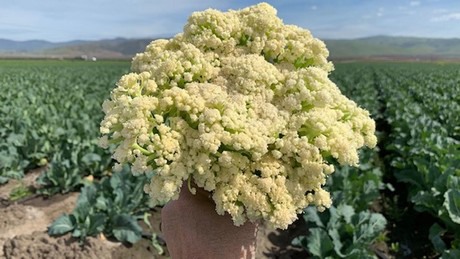 Caulilini has an open floret structure
Caulilini has an open floret structure
Sprouting cauliflower
What the farmer does not know, he does not eat. This old Dutch idiom still holds true. It is not easy to introduce a new vegetable to the Dutch market. The market in the United States is more open to this. The American company, Mann Packing, specializes in vegetable innovations. They recently introduced the Caulilini cauliflower variety. “A goofy vegetable,” according to Mann’s Rick Harris. This baby cauliflower’s unusual appearance and sweet taste convinced Mann to bring it onto the market under their own label.
Caulilini is developing the same following as that of the Broccolini, a broccoli variety Mann launched as a brand some 20 years ago. Mann describes the taste of Caulilini as slightly nutty, sweet, soft, and juicy. “It will turn your taste buds upside down,” says the company. This variety’s form, as well as its flavor, are different from that of traditional cauliflower. In contrast to the compact, white cauliflower head, Caulilini's florets continue opening wider as the plant grows. The space between the florets allows sunlight to reach the cauliflower’s stems. This exposure to the sun colors the stems light green and makes them taste sweeter. According to Mann, when it comes to structure and firmness, this new vegetable can be compared to broccoli.
In Germany, Keltenhof cultivates and markets wild broccoli and cauliflower varieties
To get the general public used to this new vegetable, Caulilini was launched in the hotel, restaurant, and catering industry first. Mann put a lot into this introduction so as to pique people's curiosity about the product, thereby creating demand. “That paves the way for this new vegetable,” says Rick. The culinary world has had access to this product for about a year now. Mann recently took the next step - offering a Caulilini retail pack. Harris says, “There is a lot of interest. If our projections go as planned, we can expect to expand our acreage.” Mann has exclusive rights to this vegetable’s seeds from Aruba Seed. They use a variety that can be grown year-round in the Salinas Valley, USA. Work is being done on developing a variety that can grow in Yuma, Arizona too.
Ever-smaller versions
According to a Brassica specialist, John Buijsman, of the Dutch vegetable breeding and seed production company, Rijk Zwaan, Caulilini is a trend that blew over from Asia into America. “It has been available in Asia for about 15 years now, and there have been hybrids on the market there for roughly the last five years. It fits in with the trend toward diversification, which you also see reflected in the development of colored cauliflower varieties.” Global seed producer, Syngenta, previously already brought an assortment of colorful cauliflowers onto the market. These varieties still find themselves in the niche market.
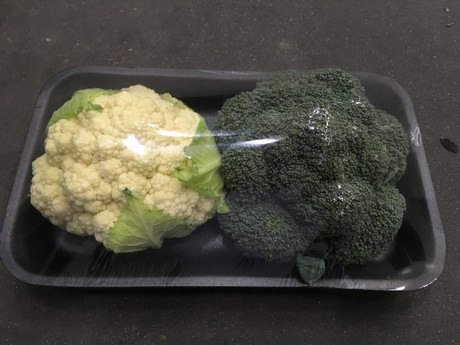 Demand for smaller cauliflower and broccoli is rising sharply in the Netherlands, according to Syngenta’s cauliflower expert, Joop Hof
Demand for smaller cauliflower and broccoli is rising sharply in the Netherlands, according to Syngenta’s cauliflower expert, Joop Hof
Joop Hof, cauliflower expert at Syngenta, does not expect new cauliflower varieties such as Caulilini to take off in a big way in the Netherlands. Experience proves that introducing a new vegetable or variety in that country is not easy. Joop says, “Retailers are quite willing to come together and co-invest, but, more often than not, things remain the same. For now, consumers mostly still keep asking for small white cauliflower. Since households are shrinking, we see smaller versions of this vegetable increasingly replacing the large cauliflower heads. The demand for very small cauliflowers is rising sharply. These are sold in a tray, together with a small head of broccoli. This is a booming trade, especially in the UK and the Scandinavian countries.”
Broccoli and cauliflower are closely related. Although broccoli has ‘only’ been gaining popularity in the last 20 years or so, various sprouting varieties have already been brought onto the market. These varieties are being eaten mostly in spring in the United Kingdom. When expressed in value, sprouting broccoli is good for about 25% of the UK’s total broccoli market. This equals a 4,1 percent market share in euro and a 3,1% market share in volume. In the Netherlands, with not even one percent of the total volume, these varieties have barely caught on. There is, therefore, ample room for growth in this country.
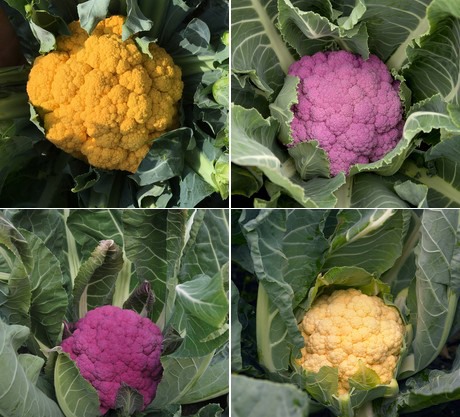 Different colored cauliflower in the field, developed by Syngenta (Clementine, Purple, Flame Star, and Graffiti)
Different colored cauliflower in the field, developed by Syngenta (Clementine, Purple, Flame Star, and Graffiti)
Colored cauliflower selling well in Germany
In Germany, the popularity of colored cauliflower varieties is ever-increasing, especially in the hospitality industry. This is also the case in the German state of Bavaria, where there is a massive demand for these unusual cauliflowers from regional wholesalers. This is according to Susanne Schramm, Manager at Fruchthof Stadtsteinach. “We sell this product, in purple, orange, yellow, and green, mostly in the summer. Especially in the high-end hotel, restaurant, and hotel segment, these colored cauliflowers have become a top seller.”
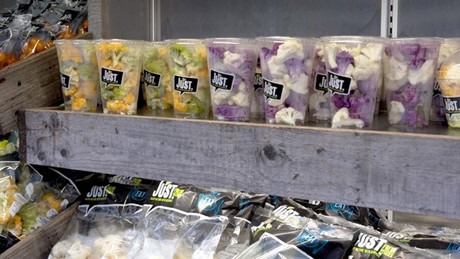 Cauliflower as a snack: shakers with mixed colored cauliflower varieties make for a colorful combination. “These varieties only stand in the field for a short amount of time and are, therefore, mild-tasting and easily digested,” explains Joop Hof from Syngenta
Cauliflower as a snack: shakers with mixed colored cauliflower varieties make for a colorful combination. “These varieties only stand in the field for a short amount of time and are, therefore, mild-tasting and easily digested,” explains Joop Hof from Syngenta
Although there are diverse colors available, purple cauliflowers are still favored, says Schramm, who has been at the helm of this German family business for about 30 years. When it comes to the supply of these colored cauliflowers, this wholesale company is mostly dependent on Dutch production. Even though the well-known Knoblauchsland cultivation region is practically on its doorstep. Specialist cultivation is still a neglected form of farming in Germany, admits Schramm. “We mainly trade standard products such as greenhouse vegetables and lettuce varieties with the regional growers. However, the high-end hotels, restaurants, and caterers want to keep putting something unique on their menus. The aesthetic aspect is certainly a major factor in that segment of the hospitality industry.”
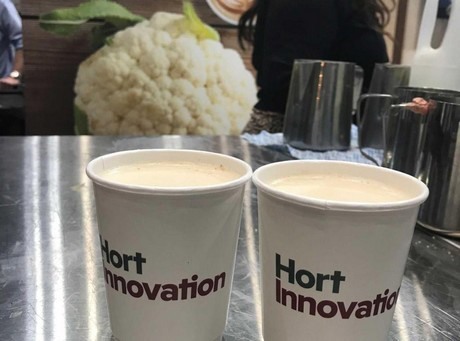 Cauliflower coffee was popular at the horticultural conference in Melbourne, Australia
Cauliflower coffee was popular at the horticultural conference in Melbourne, Australia
A cup of cauliflower?
No waste cauliflower. The entire cauliflower, Class B or yellowed cauliflowers can be dried and ground up into a powder that, from now on, can be used in one of the world’s most-drunk beverages - coffee. Visitors to a recently-held horticultural conference in Melbourne, Australia, were introduced to a ‘cup of cauliflower’. Baristas there could hardly keep up with the demand for this creamy latte, enriched with a few grams of cauliflower powder. Quite good feedback on their product thinks grower, and Australian company, Fresh Select’s CEO, John Said. He points out this type of coffee’s nutritional value. “When you start including vegetable powders in regular products that we all buy and consume, it is a huge step forward. Without knowing it, we increase our vegetable intake, and, so, eat more healthily.” According to John, “When you put 7g cauliflower powder in a latte, you ingest your recommended daily vegetable count.”
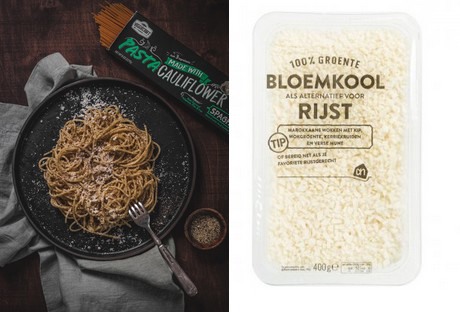 Nowadays, various forms of cauliflower, a popular carbohydrate replacer, such as pasta, rice, and dough are considered as meal fillers
Nowadays, various forms of cauliflower, a popular carbohydrate replacer, such as pasta, rice, and dough are considered as meal fillers
The idea for a ‘cup of cauliflower’ originates from a Commonwealth Scientific and Industrial Research Organisation (CSIRO) project where broccoli coffee was developed. This strange concoction made international headlines last year. Said says: "Broccoli latte was an amazing story. A novelty such as this creates awareness for what is possible. Cauliflower latte has a creamier texture, in my opinion; it cuts the bitterness of the coffee, but you are still reminded of cauliflower."
Chefs are fond of the whole cauliflower:
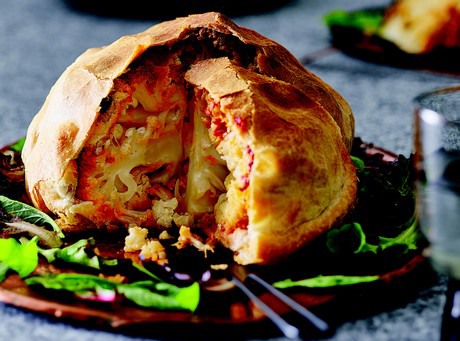 Cauliflower in puff pastry, photo credit: Sven Benjamins
Cauliflower in puff pastry, photo credit: Sven Benjamins
 Is cauliflower still recognizable in this popular Australian dish?
Is cauliflower still recognizable in this popular Australian dish?
